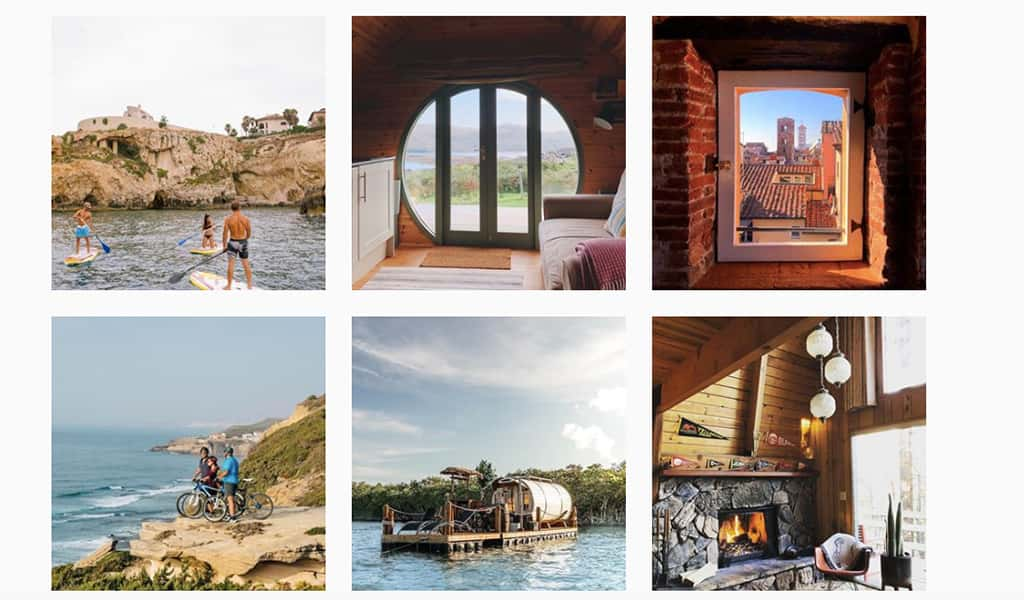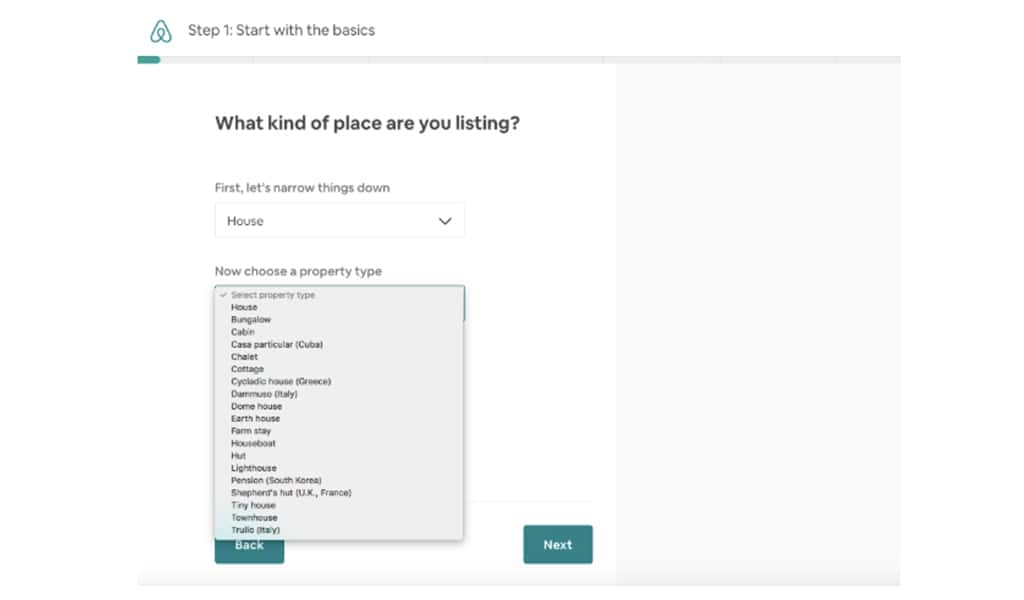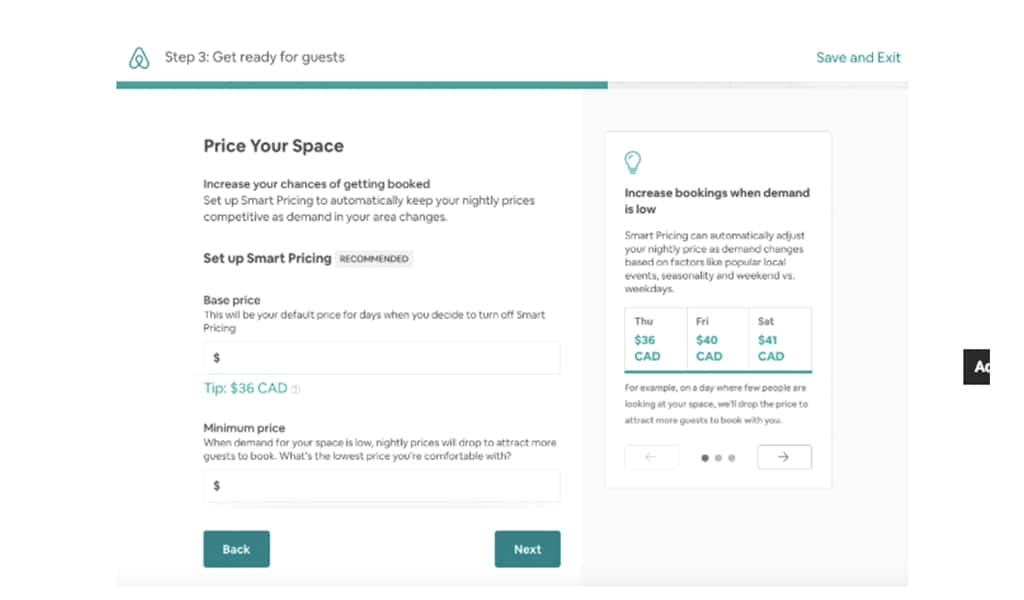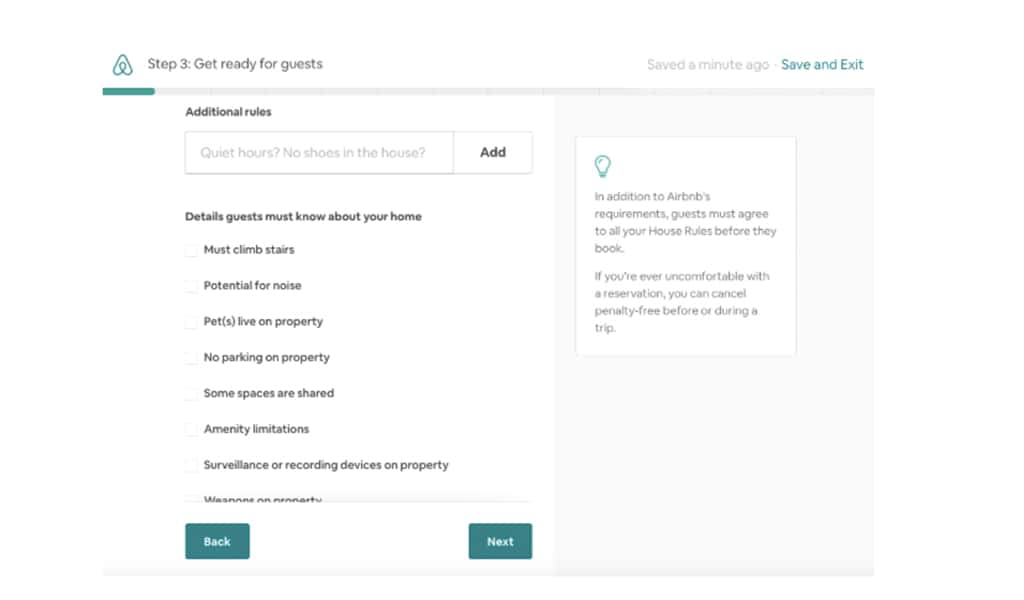How to get free rent house sitting
How to get free rent house sitting
Maybe you’re dying to travel and are starting to dream about the places you’d see, sights you’d visit and foods you’d try, but one question niggles at the back of your mind…how the heck can you afford traveling the world?! One answer: house sitting.
But what exactly is a house sitter? What do they do, what are the expectations of both home owner and sitter, and how can you get started? We’ll answer all those questions and more in this article, and point you to resources with more in-depth information. Here’s what we’ll cover:
- What is a house sitter, and what do they do?
- Who can be a house sitter?
- Why house sit?
- How to become a house sitter
- Tips for a positive experience and what to expect
- Wrap up

What is a house sitter, and what do they do?
House Sitting Magazine has a great definition of the house sitter and their role.
Essentially, a house sitter lives rent-free (by mutual agreement) in exchange for taking on house sitting responsibilities such as taking care of pets, performing general maintenance duties and ensuring everything runs smoothly – just as if the owner was at home.
House sitting is the practice where a homeowner entrusts their property, possessions and pets for a period of time to one or more “house sitters”.
This arrangement should leave the homeowner, the house sitter and pets happy. If expectations of both parties are clearly stated and met, there should be no problem – and by providing reliable, consistent customer service, you’ll probably leave with a glowing reference and maybe even an invite to return.
Who can be a house sitter?
Excellent house sitters have certain personal qualities that make them good at their jobs. MapTrotting has a detailed list of the seven traits all pro house sitters have in common, but in a nutshell, they’re:
- Great communicators and respectful
- Travellers or nomads who love exploring the world (and whose full-time jobs permit them to do so)
- Reliable, neat and trustworthy
- Animal lovers or pet owners (if you opt to sit for clients who have pets you’ll be watching)
- You’re probably a good candidate if you have these qualities, and can use them to your advantage when filling out your online profile and meeting clients (more on that later).

Why house sit?
There are many reasons people choose to house sit, including the fact that you get to travel rent-free, meaning you save on accommodations and travel at a slower pace than you would normally – you’d actually get a chance to unpack and meet new people! Plus, the barriers to entry are low. You don’t need to earn a degree – you just need the right personality, a police check and a couple of references. “Sits”, or assignments, typically last anywhere from a few weeks to a few months.
How to become a house sitter
Do your homework
As Of Life + Lisa notes, becoming a house sitter is a simple process – the main qualifications are that you’re an honest, professional and respectful individual who’s trustworthy enough to be left in charge of people’s property and/or pets. You can boost your credibility by:
- Creating a well-written resume with a solid list of references
- Getting a full background check

Join a house sitting website
Join a house sitting website, where you pay an annual membership to search for sitting gigs. Popular sites include:
Thrifty Nomads has a comprehensive roundup of house sitting sites, from international to region and country-specific, and costs to join each.
When you create your profile, keep in mind you want to show off your personality, but also present yourself as professional and trustworthy. The old storytelling mantra of ‘show, don’t tell’ applies here, says Natalie Sisson, the entrepreneur and adventurer behind the Suitcase Entrepreneur.
Tip: New to housesitting?
The key words here are “transferable skills”. What skills, qualities or hobbies do you have from years of work and volunteer experience that homeowners would find valuable? Have you taken care of pets (many gigs include pet care)? Are you handy around the house? Ever looked after a friend’s place while they’re away? Do you have a passion for gardening?
Keep in mind that applying for house sitting gigs is like applying for a job, and many of the same rules apply:
- Write personalized emails that show you read the listing thoroughly and spell out why you’re the best candidate.
- Be quick to apply and respond.
- Go the extra mile to impress your host so you get a fantastic recommendation.

Round up references
Even if you’re new to house sitting, you can still get skill and character references that will wow your hosts from:
- Friends who have hired you to pet sit (or who’ve agreed to serve as references in exchange for your services)
- Airbnb hosts, landlords, etc.
- Staff at organizations you’ve volunteered for
- Employers and colleagues
- House Sitting Magazine has published an in-depth guide packed with information on how to get your first house sitting references.
Arrange an interview and look at photos
Look out for your own comfort and safety as well. Always have a Skype interview so you can talk to the owner face to face as you’ll both have questions and want to get to know one another. Ask for photos of the house if you haven’t seen any yet, and be mindful of red flags and deal breakers. Visa-Vis Travel published a great post about how to prepare for a house sitting interview.
Tips for a positive experience
As fun as house sitting is, remember your commitment: you’ve promised to take care of your host’s property, possessions and beloved pets. They’ve often based important (expensive) plans on your arrival and are hoping for a hassle-free experience just as much as you are. Here’s how to make that happen:
Plan for what you’ll tell customs officials at the border.
Nomadic Matt brings up an important point: for international house sits, it pays to plan ahead since some customs officials may give you a hard time as the gig might be considered “work” that a local could do. He suggests mentioning you’re visiting friends and even preparing a story about how you two met, just in case they call to check.
Use tools to define responsibilities and expectations
If a problem crops up between you and your host, it will most likely be because of a mismatch regarding expectations. Don’t let that happen – clarify everything from dates of the arrangement, tasks you’ll perform and how many pets you’ll take care of to what you should do if accidents happen or pets need medical care.
There are all kinds of tools out there to help you make sure your house sitting experience goes smoothly, from templates for agreements or Book of the House, which contains all the details of your home and expectations. See example checklists here and here.
Schedule time with the homeowner before they leave.
Book some face time (ideally, a day) before the homeowner’s departure date so you can meet in person, they can show you the home and where things are and you can ask last-minute questions. Travel blog Notes of Nomads has a rundown of questions you should clarify and tips for before, during and after an assignment.
Get contact details for the home owner and one or two emergency contacts.
You don’t want to be searching the house for these should you need them if you have questions or anything urgent pops up.
Clarify which amenities you’ll have access to and which you’ll need to pay for.
This can vary widely from host to host. If you’re lucky, sometimes you’ll have food taken care of and be offered access to the homeowner’s fridge while you’re sitting, or even access to a vehicle, but this is not a given, and you’ll often need to contribute to utility bills and pay for your food. Always check with them about what’s okay to use and what’s off limits.
Send regular updates
Notes of Nomads suggests negotiating a time for you to send an update via email – perhaps a day or two after they first arrive at their destination, then once a week after that for longer term assignments, to let the homeowner know everything is okay. Then keep the agreed schedule.

Wrap up
Traveling the world and living rent-free in a different home every few weeks or months might sound like an unachievable dream, but it’s not! If you can put together a solid application and list of references, and are willing to put the work into finding a suitable match, house sitting could be the solution you’re looking for. If you remember to clearly define everyone’s responsibilities, plan for hiccups you can anticipate and send regular updates to the homeowner to stay in touch and put their mind at ease, you should be on your way to a five-star recommendation – and more house sits!
Learn more about how to get free rent house sitting
How to use Nomador to house-sit around the world – Hike Bike Travel
How to find house-sitting jobs – even paid ones – The Penny Hoarder
Bad experience house sitting – this may happen to you – Life’s Endless Adventures
How to travel without spending a dime: 12 ways to make your travel dreams happen
Proven tips to get your first house sitting job – Great Big Globe
Where’s the best place to find house sitting jobs? – Nomad Wallet
House sitting: Everything you need to know – Zero to Travel
How to prepare for your house sitting interview – Nomador
The Side Hustle
8 websites to make money online
Make more Money with your AirBnb Listing
Make More Money with your Airbnb Listing
Make more money with your Airbnb listing by following these 5 easy steps. Learn how to take the perfect picture, set a price, and find more guests!
If you have a spare room or space, listing it on Airbnb is a fantastic way to earn some extra cash as a side hustle to your full-time gig. Creative entrepreneurs and resourceful 9-to-5ers alike are catching onto the trend, no hospitality management or industry experience required! The best part: minimal upfront investment.
In 2018, Airbnb has more than 5 million listings worldwide in 190-plus countries. With the low barrier to entry, lots of supporting documentation from the company, and countless blog posts and YouTube videos on the subject from experienced hosts, it’s easy to see why many are using this to augment their income and plan for retirement. Why not join them?
Follow these 5 easy steps to transform your empty room into a money-maker:
1) Inspect and design your space
Before you start snapping pictures, inspect your space with an eye to fixing any deficiencies. Repair that leaky tap on the bathroom sink, clear out the closet and take note of anything your room needs – a fresh coat of paint? New mattress? Maybe some fun prints to hang on the walls? Above all else, ensure your place is spic and span clean.
You’ll want to design a space with “a unique and catchy style, something that can distinguish your listing from all the others in your area,” one savvy host advises in this how-to video on YouTube. He says to also consider function – how easy is it to maintain? Can your equipment handle wear and tear? How long will your space take to set up? Doing this bit of work up front will save you time between guests later, and increase your profitability.
Tip: Think about what amenities you want to offer to make your listing more appealing. For example, a young family will appreciate a changing table, crib, video game console and even recommendations for babysitters. Try to give your guests a private bathroom they’ll have exclusive access to.

An exclusive bathroom for guests makes your listing more appealing. Photo: Pixabay
Photos
To attract the most eyeballs and increase your chances of booking, it’s essential to use high-quality photos that accurately represent your property – their importance can’t be overstated, as potential guests will be scrolling through dozens of listings. Take photos of all the spaces guests can use Syncbnb, an online tool that helps hosts sync their booking calendars across multiple channels, recommends using about 20 photos at 1024 x 683 px).

Instagram screenshot, searching using the #airbnbhost hashtag.
You don’t have to reinvent the wheel here! Search #airbnb or #airbnbhost hashtags on Instagram for an idea of what excellent photos of spaces should look like – bright, cheery, inviting and sometimes quirky.
2) Sign up for an account
Next, you’ll need to sign up for an Airbnb account. Visit airbnb.ca/host/homes and click on ‘Get Started’. A box will pop up with options to sign up with your Facebook profile, Google, or email address (if you choose to sign up with email and already have a Google account, you’ll be prompted to log in with Google).
If you already have an account, click ‘Log in’ and sign in with any of the three options above.

3) Create your listing
You can rent almost any space on Airbnb – a house, bedroom, spare room, apartment, etc. Airbnb manages the nitty gritty details of the booking and payment processes, reducing your need to worry, so you can focus on making your guest’s experience a great one.
Description
You’ll be asked to answer a series of questions to describe the space you’re listing. Read Airbnb’s advice and descriptions of other successful listings in your area for hints, or search Google for tips.
Craft a short 500-word description and click-worthy title to accompany your photos. Don’t forget to write a good host profile and host picture to introduce yourself to your guests. Don’t leave out anything guests should know. Do you have pets? Are there any rooms guests don’t have access to? Specify your house rules.
Tip: Airbnb uses Instant Book, a feature designed to help you welcome more guests and earn more money by allowing guests to choose their travel dates, book without your approval, and get in touch with you regarding check-in plans. You can book guests without having to respond to each request. You’ll notice using Instant Book will positively affect your search rating and can help you reach Superhost Status, but naturally, you’ll have some questions. Learn more here.
Interaction with Guests
In this section, let them know how you’ll converse – should they contact you if something happens, or do you do daily calls?
To avoid any awkwardness, mention whether you’ll be present during their stay…if they’re taking a romantic getaway, you don’t want to be a third wheel!

Pricing
A note about pricing: Take time to consider your pricing strategy. Do you offer cleaning during each stay, for a fee? Keep in mind that Airbnb adds a few dollars extra to your price.
Review other rentals in your area and price yours competitively – maybe even slightly less than the others to start, since you can always raise your price. You can set your price to adjust based on demand (within a range), or set a fixed price. Airbnb will suggest tips you can accept or ignore.
Finish creating your listing, and you’ll receive a confirmation that it’s been published.

4) Prepare for guests to arrive
Your major prep work is done and the big day is here! It’s time to do a few last-minute things and get ready to welcome your guests. Here are some to-dos to remember:
- Reply to all messages as soon as possible after guests book (Airbnb tracks response times), and confirm you received your guest’s message.
- Text guests a photo of the property and a map on their arrival day so they know what they’re looking for.
- Write a small welcome note, with a summary of important points about your place, questions past guests have asked, your name and phone number, house rules that all-important WiFi password, and even suggestions for entertainment in your city.
Tip: Safety first! Check guest ratings before they arrive to learn what other hosts have said about them. If they don’t have any reviews, be weary.
5) Consider taxes and local laws regarding short-term renting
Just as with traditional business ventures, you’ll want to check into local laws and tax regulations regarding this type of renting for your location and neighbourhood. Be warned that the laws may be unclear, or state you must be commercially zoned and licensed to rent your space even for a short period. As you might guess, the hospitality industry is already lobbying governments to restrict Airbnb to preserve their profit, but this gives you an opening to approach your representatives in government and make your case.
That said, now that you’ve created your listing, you’re ready to welcome guests and start a lucrative side hustle listing your place on Airbnb.
Do you plan to list? Have you ever stayed at an Airbnb? Have any questions we missed answering here?
Tell us in the comments!
The Side Hustle
8 websites to make money online
Earn Money – Set up as an Amateur Photographer
In today’s digital world, there’s a huge demand for high-quality photos of (almost) any subject. Bloggers need photos for their posts, businesses are looking for images for their websites and homeowners are on the hunt for that next statement piece for their living room wall. All those images need to come from somewhere. If you have some languishing on your hard drive, why not set them free online for others to purchase and enjoy?

First, a word of caution from Popular Science: while selling your photos online can help you bring in some cash from a hobby you love, don’t quit your 9-to-5 just yet – you likely won’t make big dough starting out. For now, think of this as a way to hone your photography skills, and maybe make some pocket change on the side as you do so.
Now that we’ve got that caveat out of the way, here are some tips to get you started.
How selling stock photography works
There’s an entire array of stock photography sites out there that will happily handle sales and commissions, as well as license your photos to anyone who needs them – for a cut of the sale, of course. Visit any stock photo site and you’ll find a huge library of photos of different subjects taken by amateur, hobbyist and professional photographers who want to get their photos to market.
Keep in mind that each of these sites has their own terms and conditions. Make sure you confirm who retains the copyright to your work. In most cases, you’ll still own your photo. Buyers will purchase a license and use your image under specific conditions.
Some sites will offer royalties and other perks. If you agree to exclusivity, this means you’ll be paid more if you commit to not selling your photos anywhere else. Avoid those contracts and you’ll earn less money, but you can also submit your images to other sites.

Do your homework
Find your niche
What do you most like to take photos of? Maybe your niche is urban or rural landscapes, nature, travel, specific industries such as manufacturing, food or wine, etc. As Shopify has found, it takes a bit of studying what styles and photos are already selling to find a niche that will work for you:
“Finding your niche if you want to sell pictures online is typically something you feel your way into as you see which styles and photos resonate with your audience. But you can also evaluate the demand for certain topics using keyword research to analyze the search volume for terms related to your photographs.”
Shopify also suggests using the browser extension Keywords Everywhere to find the search volume, which will appear right in your Google search. Watch for the keywords that attract more than 1,000 average monthly searches. This gives you a starting point to hunt down in-demand subjects and angles that can spur ideas on what (or who) you may want to focus on.
Other keyword research tools include Soovle, Moz Keyword Explorer, KeywordTool.io, Google Trends and Google Keyword Planner, SEMRush, and many more.
Scope out stock photo sites
Stock photo sites handle the transactions and payment collections so you can focus on creating amazing images. These are just a few of the many stock photo sites you’ll have to choose from:
500px
500px is a stock photo site and community-based platform for photographers. Join and you’ll be able to submit your creative, commercial and editorial photos to their Marketplace, list yourself in a directory and follow other photographers. Log on to this site and you’ll see eye poppingly beautiful shots from around the world. See 500px.com/licensing for more information on submission requirements, becoming a contributor, licensing and more.

Adobe Stock
The Adobe suite of software is used by creatives worldwide to craft premium products, and the company has branched into offering high-quality stock photography, touting best-in-class royalties. Every time someone purchases your content, you’ll get a 33% commission for photos and vector art, and a 35% commission for videos based on the price of the image. You can also track sales in real time using the dashboard and save hours of time using their auto-tagging feature to add keywords.Visit contributor.stock.adobe.com for more information.
Alamy
Alamy is a resource for big brand names with big media budgets that need a range of stock image choices. You’ll get a 50% commission and can sell stock images, vectors and live news photos. Learn more about being a contributor.
Dreamstime
Dreamstime is one of the largest stock photo sites with more than 90 million images, and offers contributors a 25 to 50% revenue share based on the net sales amount for each transaction. Exclusive files receive an additional 10% bonus, and exclusive contributors enjoy a 60% revenue share for alls ales, plus a bonus of 20 cents for each approved submission. You can even become an affiliate and earn cash for buyers and contributors you send to the site. For more information, see their FAQ page.
Shutterstock
With more than 243 million royalty-free stock images, Shutterstock is another behemoth among the stock photo sites. Here, photos are non-exclusive and cheaper to purchase – a good place to start out. You can also create a personalized photo page, easily track earnings with smart tools and grow your skills by joining the international community. See submit.shutterstock.com for more details and visit The Shot List to see the most requested content Shutterstock customers will be looking for.
For more stock photography sites, see Make Use Of’s 12 most profitable places to sell your photos online.
Submit your photos
Choose one or many of the sites from the list above and submit your images according to the process specified on each site. Not just any snapshot will do – your images will have to meet a certain quality threshold. Also look for details about how you’ll be paid, as methods vary from site to site.
Don’t forget…
Your own website
That you can also sell your photos on your own website and keep 100% of the profits from your images! WordPress is a platform used by creative entrepreneurs all around the world and you can easily build an e-commerce portfolio site, install plugins like WooCommerce and Easy Digital Downloads, and have a gorgeous looking site built quickly.
Shopify
You might also consider building your site on Shopify’s platform, which has different themes you can use to change the look of your site and apps to add functionality.
Check into legal issues and ethical considerations
The old cliche that “with great power comes great responsibility” is very much true when you’re looking through your camera’s viewfinder. Don’t forget to look into privacy and other laws in your country before you shoot. When it comes to legalities, I first must state that I’m not a legal professional, and this advice was found via simple online research.
Digital Photography School reminds us that in the U.S., you cannot legally photograph people in private spaces without their expressed permission, since every citizen is guaranteed a reasonable expectation of privacy. On the other hand, when someone steps into public domains such as public parks, they forfeit their right to privacy and can legally be photographed without their consent.
There are also laws when it comes to using someone’s likeness for promotional purposes. While editorial use (selling your photo of someone in a public space to a publication or newspaper) is protected, you could not legally sell it or use it to promote your product, service or cause, because the subject didn’t consent to this use.
Therefore, Digital Photography School explains that you’ll want to have a model or photo release for people (and even privately owned buildings) if you’re going to sell your images as stock photography or submit them to photo contests where they could end up being used as promotional material for the person or company running the contest.
Check the laws in your country or location, and consult a legal professional, before you spend time and money attending an event or setting up a shoot.
Also consider your own ethics as a photographer. Depending on the circumstances, would you really feel good about selling a photo in which the subject didn’t want their photo taken, or published? What types of clients are you looking for, and who would you not be willing to work with?
Pay taxes
Now that you’re making income selling your photos, welcome to the world of taxes! You’ll need to declare the income you make from your side hustle, so do yourself a favour and track it closely throughout the year to make tax time as painless as possible.
Wrapping up
If you’ve got a decent DSLR camera, some time on your hands, and a talent for photography, you could be earning some cash back on your investment while improving your skills and meeting passionate photographers from all over the world. As with any side hustle, there are factors to consider before making the leap, from which platforms to join and how to choose your niche to marketing, and legal and tax implications. Once you navigate these, grab your camera, launch your website and above all, have fun!
Learn more about how to earn money as an amateur photographer
How to make money selling your photos online – Save the Student
Sell your photos online: 5 websites that pay $100 per image or more – The Penny Hoarder
Top 12 places to sell photos online and make money – Envira Gallery Blog
37 ways to make money selling photos online – The Work at Home Woman
The Side Hustle
8 websites to make money online
Make more Money with your AirBnb Listing
The Bahamas islands: A Simple (But Complete) Guide
A Vacation to the Bahamas
Already wishing you could trade in your cold weather hat and mitts for a hammock swinging softly in a warm ocean breeze, a bathing suit and maybe even a colourful fruity drink at your side this winter? Look no further than The Bahamas.
This collection of 700-plus islands, cays and islets sprinkled across the Atlantic Ocean lies just 50 miles off the coast of Florida. The country welcomes about 6 million tourists a year, and it’s easy to see why. Sun, sand and miles of coastline bathed by the clearest water on the planet await you! And the archipelago is an ecological oasis – the world’s third largest fringing barrier reef (The Andros) is home to many species of exotic ocean life.

The best part: you can soak up the Bahamian sun, enjoy the tropical metropolis capital Nassau and even take some unforgettable adventures on a modest budget. Here are our best tips based on our personal experiences and research about this perfect year-round destination.
Take public transportation
Once you touch down at one of several airports or step off your cruise ship, you’ll have different transportation options depending on the island you’re headed to. There are 57 airports and airstrips across the islands, many of which have port of entry status. You could take the national Bahamas Air airline, an air-conditioned Bahamas Ferry, or perhaps a mailboat (essentially, slower ferries). You can also charter a yacht or flight.
From there, you’ll also want to consider your options for getting around the island you’re staying on. Most likely, you’ll end up on Nassau of New Providence, Paradise Island or Grand Bahama. Here, options are for the most part similar to what you’d see at home. Take a public bus (also called jitneys), taxi, or rent a car. If you’re feeling a bit more adventurous, you can even rent a scooter or take a horse carriage ride. Bermuda Attractions has a great guide to getting around the island, as does bahamas.com.
Stay in Nassau to save cash
As for where to stay in Nassau, you’ll find there are a range of options even on a budget. Rent an Airbnb to save cash on a hotel room, or find a good deal on a nearby hotel or villa. The Towne Hotel and Nassau Palm Hotel in the heart of downtown Nassau, along with Sunrise Beach Villas, are all close enough to the action that you’ll save on transportation costs.

Discover Nassau and Paradise Island
When you venture outside to explore Nassau Paradise Island, you’ll discover it lives up to its name. Whether you’re looking to dive to the water’s depths to meet some of the beautiful marine life, search for handmade treasures in locally owned shops or indulge in a decadent night out, it’s all here. Learn more about what you can do for free in Nassau.
Tip: No need to switch your US currency to the Bahamian Dollar before you take off; the two are almost the same in value.
Source: Everything Everywhere
Waterparks
Though Mark found The Bahamas to be Americanized, he did discover some attractions worth checking out, including the massive 141-acre Aquaventure Atlantis Waterpark. As the Caribbean’s largest water-themed attraction, it draws international attention for its grandeur; you’ll find pools and beaches galore, one of the world’s largest open-air, man-made marine mammal habitats at Dolphin Cay, luxury accommodations, restaurants, fitness and sports facilities, and much more.
<blockquote"We didn't have the time, as this is a vacation on its own, but if you aren't going to visit Aquaventure Atlantis Waterpark at least take a cruise around Paradise Island,"
You’ll probably get to see homes of a few high-profile celebrities, including Nicholas Cage and Oprah.
And the Rum Punch served onboard the island cruises is a must.

Dining out
Tip: Try some Bahamian cuisine – shellfish, lobsters, crabs, and tropical fruits are popular. Pineapple tarts and fruitcake are among your delicious choices for dessert.
Source: Everything Everywhere
Craving a little taste of home? You’re in luck – there are Burger Kings all across the island to satisfy your appetite.
Excusions
For a one-of-a-kind experience, you’ve got to visit The Exumas, a chain of islands that stretches just south of Nassau. You’ll be greeted by miles of soft sparkling white sand beaches, turquoise waters and wondrous aquatic life, including stingrays and pigs – yes, pigs! Wild swimming pigs can be found near Staniel Cay on Big Major Cay, and you can even jump in the water with them. More about that (and a few other things to do while you’re there, here and here).
Planning that dream trip
As we’ve discovered, The Bahamas is an unspoiled paradise of immaculately clean beaches, blue waters, sublime resorts, and an entire ecosystem of marine wildlife to experience up close – all of which you can see on a budget.
Are you about to make your first visit to The Bahamas? Returning to a favourite vacation spot? What are your best tips when it comes to saving for vacations? We’d love to hear what you’ve planned, or any tips we missed! Share your story in the comments.
Where else does Caddle recommend?
Learn more about traveling in The Bahamas
Official home of the swimming pigs – bahamas.com
Best things to do in Atlantis Resort Bahamas – Diana’s Healthy Living
How to earn money driving your car
It can be stressful when you check your bank balance and suddenly realize you’ve got more month than money left. After rent, groceries, gas, repair bills and all of life’s little daily expenses, you feel like you barely scrape by, never mind save for the future. What can you do to give yourself a bit of a cushion, even get ahead?
We’ve got a solution for you: get paid to drive your car. Yes, you can earn cash just by using the car you have now to cart food, people and equipment around town, and make others’ lives easier in the process. You can even rent your car out, so you don’t have to drive at all. Here are some tips on how to earn money driving your car:

Join Lyft or Uber
Are you a people person and a natural conversationalist who enjoys helping others get where they need to go? Signing up for a ridesharing app like Uber or Lyft might be for you.
Both ridesharing services allow you to set your own hours and make more during peak times, such as after hours or when bars close. You’ll have a couple of payment options for each. In addition, you’ll need to pass basic requirements to become a driver for either Uber or Lyft, so be sure to have your licence, registration and all paperwork in order before applying.
With the latter, you also have to own a smartphone.
Learn more about:
Uber’s driving requirements and how it works
Transport equipment
Are you more introverted but are fine with delivering items instead of people? Consider transporting equipment – it doesn’t talk back, and there’s no need to maintain a conversation.
If you’ve ever bought an oversized, bulky item from a department store or garage sale, you know it can be a hassle to get it home…if you’re not lucky enough to have a pickup truck, van or large SUV. If you do have one of these vehicles at your disposal with room to spare, why not lend your services?
You’d be helping people avoid paying the outrageous prices stores charge for home delivery and earn a little cash in the process. An added bonus: you don’t have to depend on word of mouth alone to build up business – you can sign up for the app TaskRabbit to promote your services in your neighbourhood.
Deliver food and groceries
This one is popular for people who live in large, urban cities, where food delivery services have gained popularity in recent years. There are a bunch of grocery and on-demand food delivery apps that allow drivers to pick up and drop off orders. This way, clients avoid the lineups at the store or restaurant, and you earn cash for bringing them food they love.
Similar to other apps, you must be of at least legal driving age and have a valid licence, registration, insurance and a clean driving record. Each have specific policies and pay rates, but you can expect to make anywhere between $13-$25 per hour on average. Check out platforms like UberEATS, Grubhub, Shipt and more.

Bonus: Rent your car out
This option may not be for the risk-averse, but if you only use your car for incidental trips, why not let it make money for you while you’re at your day job? That’s the idea behind HyreCar, a car sharing platform for rideshare drivers.
It works much like the ridesharing apps themselves, but this one lets you rent your car out to other drivers. You’ll create a free listing, describe your car, upload a few good-quality photos, your vehicle registration and Uber/Lyft inspection documents. There’s a time limit on rental requests – someone asks to rent your vehicle, you’ve got 24 hours to confirm. According to HyreCar, drivers tend to book multiple vehicles to increase their chances of getting on the road faster, so the first owner to approve their booking request will earn that money.
Next, you’ll verify documents, including registration, vehicle inspection and insurance, verify the driver’s licence and hand off the car. When you approve the application, drivers are charged and there’s a secure payment system to ensure you get paid. When the rental is over, you coordinate a pickup time and location with the driver.
Wrapping up
These are just a few of the multitude of options you can consider to make money driving or renting out your car. While they can earn you extra cash and it doesn’t take much to get started, don’t forget about extra expenses you may need to take on and factor into your budget, such as maintenance, gas, and general wear and tear that happens with such regular use.
Learn more about how to earn money driving your car
40 ways to make money with your car (with apps) – MoneyPantry
19 flexible ways to make money with your car – The Work at Home Woman
9 apps that let you make money with your car – NerdWallet
5 ways to make more money driving your own car – HyreCar
Beyond Lyft and Uber – How to make money using your car – Forbes
What it’s like delivering food for Uber – Ridesharing Driver
The Side Hustle
How to Get Free Rent House Sitting
8 websites to make money online
Make more Money with your AirBnb Listing
Set up as an Amateur Photographer
Why you must experience French travel at least once in your life
Travelling in France
Picture sunning on the beaches of Nice, peering up at the infamous Arc de Triomphe, or enjoying a brilliant glass of vino over brunch with your special someone.
It’s all within reach when you book a few days in France. The world’s most popular international tourism destination drew 86.9 million international tourist arrivals in 2017, according to UNWTO, the World Tourism Organization. While its capital city, Paris, is the third most visited in the world, there’s much to discover beyond the well-known centre, from charming French villages and the Chateaux (castles) of the Loire Valley to the stunning mountain ranges of the French Alps.
You’d be forgiven for thinking you’d need to save for half a lifetime or win the lottery to truly enjoy France’s decadence and historical beauty, but it is possible to travel here affordably. We’ve compiled our best tips based on our personal experiences visiting this country famous for its history, culture and romance.

Plan ahead, travel with friends and pack picnic lunches
Pre-planning your transport and destinations for the day is one way to save.
“Purchase your Eurorail pass and pre-book all train trips – France has limited seating for Eurorail pass holders, and you don’t want to be stuck in a city not able to move to your next destination!” cautions Whitney.
Tip: With its plethora of seaside spots, beaches and ski resorts, France is a fantastic year-round destination, but travel website Wandershare advises avoiding the summer mid-July to August rush. It also attracts hordes of skiers, so you’ll want to miss the mid-February to mid-March window.
Jaime encourages would-be visitors to go with friends. “Book an Airbnb to save a bit extra, then you get to live like a local.”
Her group would often grab lunches and drinks (including wine) at the corner store to enjoy on a leisurely outing. Unlike in Canada, in France the legal age for buying alcohol is 18, and you can legally drink in public. Just don’t forget to bring your ID.
“You can sit anywhere – parks or gardens – and enjoy whatever snacks you have, and you can drink wine anywhere!”
“You can sit anywhere – parks or gardens – and enjoy whatever snacks you have, and you can drink wine anywhere!”
Passionate about horticulture? You’re in luck – the French Ministry of Culture has classified more than 300 Jardins remarquables, or Remarkable Gardens of France, that can be found across the country. From a small, private English “secret” garden in the village of Plobsheim to a romantic landscape park with views of the ruined castle of Ottrott, you’ll have plenty of opportunity to stop and smell the roses and countless other types of flowers.

Costs to travel in France
Here’s what you should budget for major expenses while in travelling in France:
Accommodations: $100 to $300 (CDN)/night depending on location and amenities (Airbnb)
Meals: Budget $80 daily (CDN) and shop around markets and small stores for better value on food.
Attractions: Prices will start from $50 upwards as the euro is stronger than the Canadian dollar. Budget this separately for anything you think you may want to visit.
Learn tips to save money while exchanging currency in France
Social norms
- Friends and family kiss both cheeks when greeting; acquaintances shake hands
- Much like in Canada, manners are important. Avoid yawning or chewing gum in public
- The French appreciate attempts to speak even basic French
- When dining in a home, finish your plate and do not ask for seconds
- Being loud in public spaces is considered to be very rude; talk softly
- Use your pronouns correctly. Use “vous” until invited to say “tu” or until you’re addressed by your first name. It will signal your respect.

Enjoy France’s intricate transit system
Take advantage of France’s exceptional transport and travel network, which offers a number of options for different time and budget constraints. If you rent a car, be prepared for toll booths on major expressways, drive defensively, and avoid driving in major cities. Car traffic is even banned altogether in many Italian city centers, such as Rome, Naples, Florence, and more. See Rick Steves’ Europe blog for more driving tips and road rules.
As another option, trains are a fantastic way to get around. France’s state-owned rail company operates four main rail services, including High-Speed (TGV), Intercité, Regional/Local and International. The Savvy Backpacker has an excellent train guide to answer all your questions.
Discover world-renowned history and architecture
There is no shortage of stunningly beautiful museums, villages, parks and other attractions to explore throughout France. In fact, the largest country in the European Union has more than 40 sites on the UNESCO’s World Heritage List.
After you’ve had a chance to settle in, travel website Wandershare recommends getting back to nature and exploring the architecture France is renowned for. Hike through the forest of Fontainebleau or see how our ancestors used to communicate at the Grotte de Lascaux Cave Paintings. There’s also the world famous Arc de Triomphe in western Paris (which honours those who fought and died for France in the French Revolutionary and Napoleonic Wars), the Louvre Museum and the awe-inspiring Notre Dame Cathedral.
Hoping to indulge your senses and learn some cooking tips in a land acclaimed for its mouthwatering dishes? Sign up for a cooking class.
Another option if you’re craving a romantic meal for two or a night out with friends while travelling in France: venture out to one of the restaurants in town.
Tip: Paris’ Latin Quarter boasts an array of cafes, restaurants and bars to spend your evenings.
Shauna still raves about the beef bourguignon she had for dinner.
“The dish is a stew made of beef braised in red wine, beef broth and seasoned with garlic, pearl onions, fresh herbs and mushrooms. It was really good.”
“The dish is a stew made of beef braised in red wine, beef broth and seasoned with garlic, pearl onions, fresh herbs and mushrooms. It was really good.”
Looking to indulge in a guilty pleasure? Try a familiar favourite with a delightful twist.
“Everyone has heard about how the French love French fries and mayonnaise, but you may not have heard of French fries and samurai sauce – ridiculously delicious, but sooo bad for you,” laughs Mick.

Shop ‘til you drop and relax on the beach
Beyond the capital, the cities of Toulouse, Strasbourg, Bordeaux, Nantes and others attract curious visitors indulging their lust for culture.
If you’re hoping to go hat shopping, you’re in luck, says Mick. “France is a great country to buy a hat. They love a good chapeau, and you should be able to find a hat store on any high street.”
For entertainment and tech lovers, there are also large retail electronics stores such as FNAC.
After all that shopping, you’ll probably be ready for a day of sun and fun. The must-see French Riviera, a stretch of coastline along the France-Italy border that’s “a slice of sweet, Mediterranean heaven” (according to travel website Happy to Wander), welcomes millions of tourists to the Provence-Alpes-Cote d’Azur region every year.
France is doable on a tight budget – if you plan ahead, visit at the right time of year, and are open to creative ideas for fun and entertainment. The country’s world-renowned arts, history and culture, not to mention its breathtaking landscapes, all factor in to why it’s the world’s most popular destination for tourists.
Are you traveling to France for the first time? Returning to a favorite destination? What are your best tips when it comes to saving for vacations? Share your story in the comments!
Download the Caddle app.

Learn more about traveling in France
France Travel Guide – Nomadic Matt
20 Things to Do in Paris on a Budget Infographic – This World Rocks
Hidden Paris: 10 Secret Spots in Paris You’ll Love – Solo Sophie
Incredible Destinations in France for Your Bucket List Besides Paris – Happy to Wander
Travel France by Train – Trainline
Where else does Caddle recommend?
Here's what the Caddle team says about Costa Rica vacations
Travelling to Costa Rica
If you’re into taking outdoor adventures, seeing wonders of nature and getting an up close and personal experience of a lively culture, Costa Rica should be on your shortlist for your next vacation.
With all its natural wonders, the country has become a mecca for eco-tourists, welcoming more than 1.7 million visitors per year, according to the Costa Rican Embassy in Washington, DC.
If budget is your number 1 factor for a vacation to a sunny destination, you may want to look elsewhere; For Two, Please cautions that Costa Rica is one of the most expensive countries to visit in North America. It cites tour costs of about USD $100 per person per day and gas prices at USD $1.07 per litre. There’s hope: visit during the rainy season (May to November) and you’ll see some savings. It’s also still lush and beautiful during this time of year.
If you’re looking to travel on a modest budget, read on – we’ve got some helpful tips based on our personal experiences visiting this tropical haven.

Book an Airbnb and rent a car or hop on a bus
As for where to stay, as of October 2018 you could rent an Airbnb for anywhere from $62 for an apartment in downtown San Jose to $236 per night CDN for the award winning private Pura Vida Ecolodge near the South Pacific Coast.
Want to stay at a traditional resort? Take Brian’s glowing recommendation and book a room at Riu Palace, an all-inclusive hotel in Guanacaste where he stayed with his wife and some cousins in 2017. He especially appreciated the staff’s attentiveness and kindness. http://www.riucostarica.com/
“The Riu Palace was really nice,” he says. “I found the staff to be super pleasant. The cleaning staff left the most wonderful pillow and towel decorations each time they cleaned the room. One of the most interesting was the swans.”
<blockquote"I found the staff to be super pleasant. The cleaning staff left the most wonderful pillow and towel decorations each time they cleaned the room. One of the most interesting was the swans.”
You’ll never want for anything here – on its website, Riu Palace promises four swimming pools, jacuzzi, gym, sauna and a wellness centre where you can get a relaxing massage. You can also enjoy sports and activities like windsurfing and beach volleyball, and entertainment for children and adults. At night, venture out to the discotheque an casino. Chefs dish up a variety of dishes from classic to the most exotic.
Carry enough Costa Rican currency to get by
The colón is Costa Rica’s national currency. U.S. dollars are accepted in Costa Rica, so there’s no reason to exchange money in advance, according to travel website Costa Rica Guide. You’ll just want to bring $20 American bills or smaller, since there are often problems with counterfeit bills in larger denominations.
To avoid losing your cash to exchange costs, pay for items priced in U.S. dollars with American money, and those priced in colónes with colónes. Canadian dollars and Euros are not accepted in Costa Rica.

Try the local cuisine
Popular dishes in Costa Rica include Chifrijo, fried plantains, casado, tamales, vigoron, pozol corn syrup, arroz con leche and of course, the local coffee. Luckily, it’s not customary to tip your waitstaff or your bartenders.
Tip: When you’re ready to leave a restaurant, you must ask for your official bill, which will likely include a service charge.

Rent a car or take a bus
Once you’ve arrived, you’re going to need a cheap way to get around. Travel blog Mytanfeet recommends renting a car for the freedom to go where you want, when you want. Their Important Tips for Renting a Car will tell you what you need to know.
Tip: Costa Rica doesn’t have traffic control measures like you’d see in North America, and driving in the country can be scary. Locals tend to tailgate and not signal, so reconsider driving if you’re not used to being on four wheels in a foreign land.
Source: Mytanfeet
Don’t want to deal with driving in a new country? Take a bus . Although it’s slower, Uneven Sidewalks says it’s also a cheaper option (and safe and comfortable to boot), and you can explore hidden gems away from the main tourist areas.
Take a tropical outdoor adventure
From strolling through lush tropical rainforests and watching Capuchin monkeys leap between branches to picking up a bit of Spanish during a trip to the busy, vibrant capital of San Jose, you can pack a lot into your time in Costa Rica.
The country has strived to develop sustainably and protect its unspoiled landscapes from destructive agricultural practices while reaping the benefits of ecotourism. With 26% of its 19,730 square miles dedicated to national parks, wildlife reserves and protected lands, nature & animal lovers, photographers and adventure seekers alike will love this verdant paradise.
As an adventurer, Brian found lots to entertain him.
“We went without an agenda, and with absolutely no schedule,” he remembers, adding the area he and his group visited was rural, with a large agricultural base.
“I didn’t plan to stay on the resort the whole time, and we didn’t. Being the more adventurous type – perhaps due to having been in the Army – I wanted to do extreme things,” he says, adding he appreciated the advice from the locals on which attractions to try and which to avoid.
Thanks to a guide they met on the beach outside their resort, Brian and his wife took a number of day trips. One of the most memorable was the Riu Guanacaste Canopy tour that had him zip lining over part of the jungle. He then went horseback riding along the ocean.
“This was a pretty good experience, even though the horses almost looked wild and yet, malnourished.”
Excursions
Any excursion can be transformed into an unforgettable experience you’ll remember forever, thanks to Costa Rica’s technicolour natural wonders. The couple behind travel blog Uneven Adventures recommends heading to the capital city of San Jose, swimming in the pools near La Fortuna Waterfall and hiking through Manuel Antonio National Park (where white-faced Capuchin monkeys do gymnastics in the trees).
Volcanoes dot the landscape in this part of the country, and Brian took full advantage of this as he relaxed in warm waters and a sauna, which naturally heated by a volcano, before hiking through hilly terrain, which features many cool volcanoes. It’s also worth setting your alarm to watch the Costa Rican sun rise.
“I really enjoyed waking up early and watching the sun rise, and staying up late to watch it set on the ocean,”
Famous Coffee
Costa Rica is also famous for its coffee, and you can see the harvesting and roasting process for yourself at Hacienda Espíritu Santo’s facilities in Naranjo, just outside San Jose. It’s just one of the 6 best Costa Rica Coffee Plantation Tours, according to Costa Rica Experts.
If you do your research, spend wisely and are willing to avoid peak traveling times, you can travel in Costa Rica affordably. It’s a country full of tropical delights, including rainforests, waterfalls, volcanoes, exotic wildlife, dazzling beaches, and more.
Are you travelling to Costa Rica for the first time? Returning to a favourite destination? What are your best tips when it comes to saving for vacations? We’d love to hear what you’ve planned, or any tips we missed! Share your story in the comments!
Learn more about traveling in Costa Rica
- The Adventurer’s Guide: 16 unforgettable things to do in Costa Rica – For Two, Please
- 10 mistakes to avoid traveling in Costa Rica – Mytanfeet
- Top 5 reasons why vacations in Costa Rica are great – Costa Rica Vacation Online
- The ultimate guide to Costa Rica with kids – Parenthood and Passports
- How to rent a car in Costa Rica – Costa Rica Guide
Where else does Caddle recommend?
